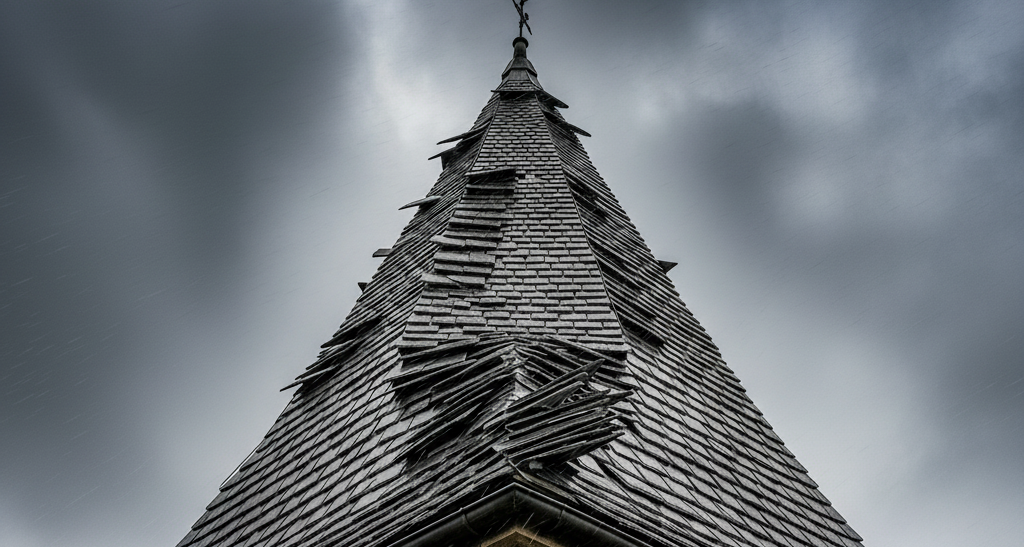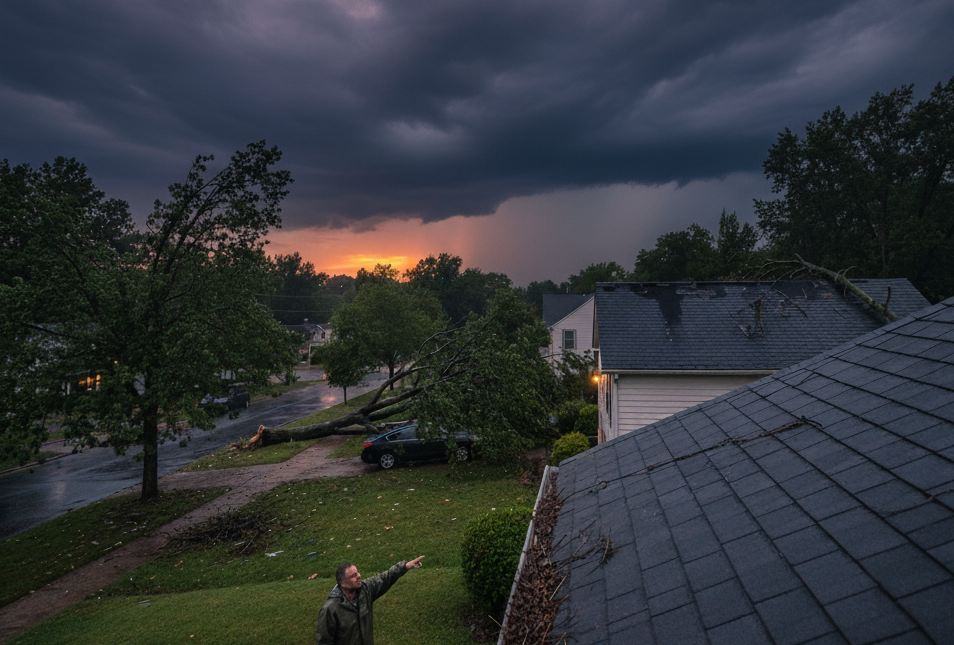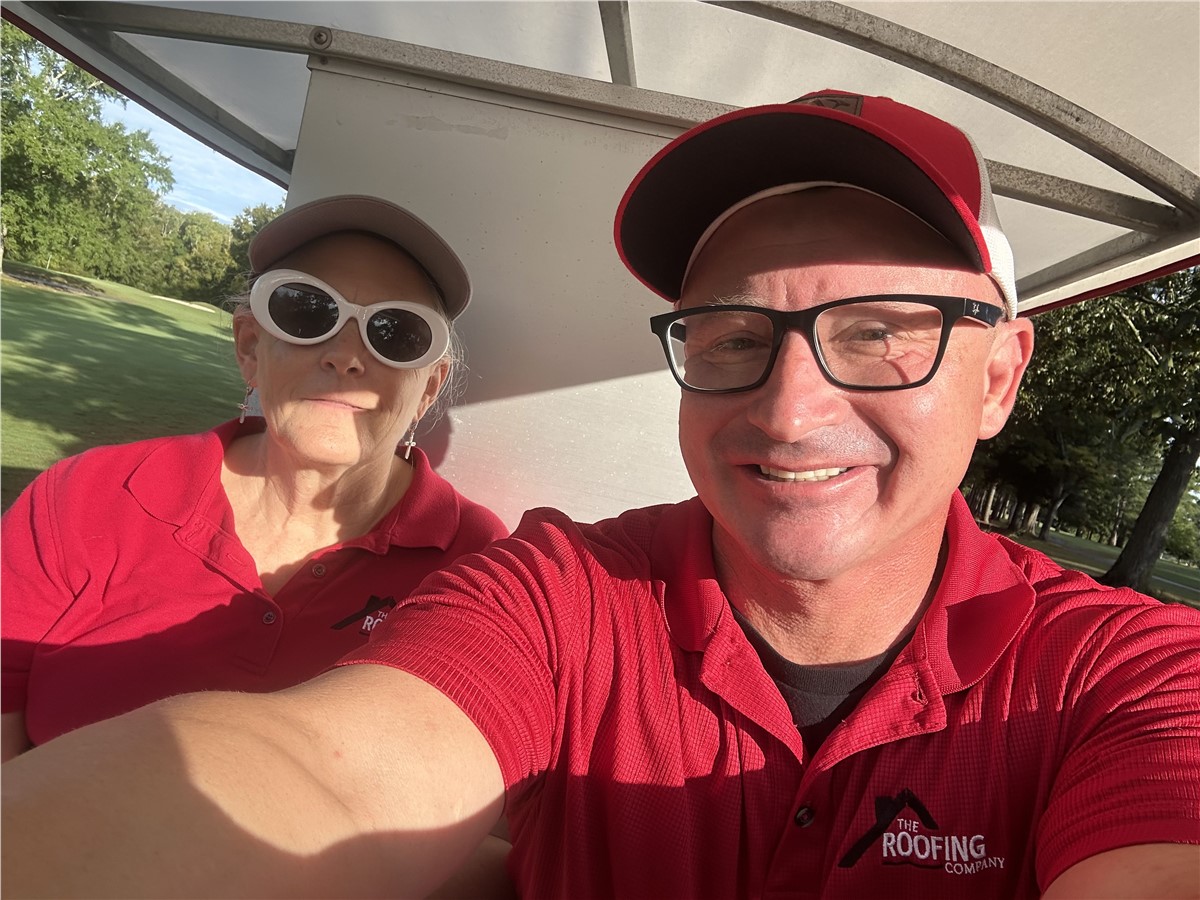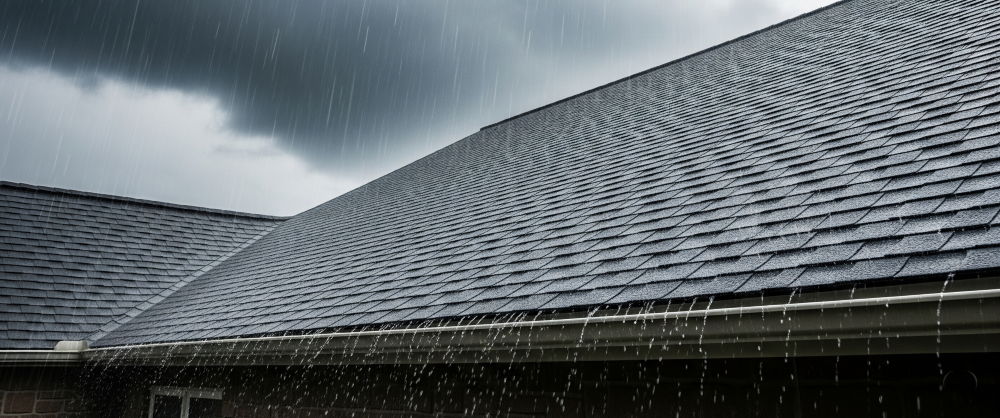
Have you ever walked by a historic church or an old building with a steeply pitched slate roof on a blustery day and heard a peculiar tapping sound? It might sound like a gentle rhythm, but this isn't a song. It's what the roofing world calls slate chatter—a phenomenon where the wind causes individual slates to bang against their neighbors. While it might seem harmless, this chatter can signal a bigger problem for your roof.
What's Causing the Racket?
The main culprit is wind uplift and turbulence. This is especially common on very steep surfaces like steeples, dormers, and gables, where wind can easily get underneath the slates. As the wind pushes and pulls, it can cause the slates to lift and move, creating a domino effect of knocking and tapping. Over time, this constant movement can wear down the slates, potentially leading to cracks, breakage, or even a loosened slate falling off.
Slate Roofs and Hurricane Winds 💨
While chatter can be a warning sign, slate roofs are surprisingly resilient in extreme wind conditions. A study on roofing damage after Hurricane Katrina found that structures with steeply sloped roofs held up better against high-wind damage than buildings with low-sloped roofs. This is because the materials on steeper roofs can better defend against wind uplift forces during hurricanes. The study, led by ORNL engineer Andre Desjarlais, recommends that new construction follow updated building codes and manufacturer guidelines.
This resilience was also demonstrated in a separate study that highlights how slate roofing is a rigid, low-profile material that wind has a hard time getting underneath. In fact, the article details a few case studies of slate roofs that endured Hurricane Katrina's strong winds with minimal damage.
The Moores Residence: This two-year-old slate roof, with a 12:12 slope, had no damage at all, even though the surrounding area lost over 72 trees.
The Mandal Residence: The roof on this house, located in the eyewall of the hurricane for 12 hours, lost only about 250 out of 21,000 slates—a remarkably small amount of damage.
The Longue Vue Museum: This 1942 slate roof suffered no damage to the slates themselves; only the metal hip and ridge coverings were blown loose.
The Silent Consequences
While the sound is the most obvious sign, the real danger is the damage you can't see from the ground. Loose or rattling slates are at a higher risk of breaking, which can compromise the integrity of the entire roof. This can lead to leaks, water damage, and costly repairs down the line. That's why experts from the National Slate Association (NSA) emphasize the importance of addressing the issue promptly.
Quieting the Chatter: The Right Way to Fix It
If you suspect your roof is chattering, the first step is to call a professional. Repairing a slate roof, especially on a steeple, is not a DIY project. Here's what you should know:
Proper Installation is Key: The best way to prevent chatter is a well-installed roof from the start. Correct headlap, appropriate nail length, and solid sheathing all contribute to a roof's wind resistance. A four-inch headlap is recommended in high-wind areas.
The Right Fixes: If a slate is loose, a qualified contractor will use proper fasteners, slate hooks, or the nail-and-bib method to secure it. They'll never face-nail the slate or use adhesives like caulk or cement, which can cause more harm than good.
Professional Expertise: A professional specializing in historic structures will know how to safely inspect and repair the roof. They'll have the right equipment to work on steep surfaces and will follow safety protocols to prevent accidents.
Don't Let It Go Unheard
Slate roofs are known for their longevity, often lasting over a century. However, this impressive lifespan depends on proper maintenance. Ignoring a rattling roof isn't an option. The chatter you hear today could be a sign of a larger problem brewing. Regular inspections, especially after severe weather, are the best way to catch these issues early.
So, the next time a strong wind blows, listen closely to your roof. If you hear that distinctive tapping, it might be time to call in an expert to ensure your slates are securely in place for generations to come.
Subscribe to The Roofing Company's Blog








Comments